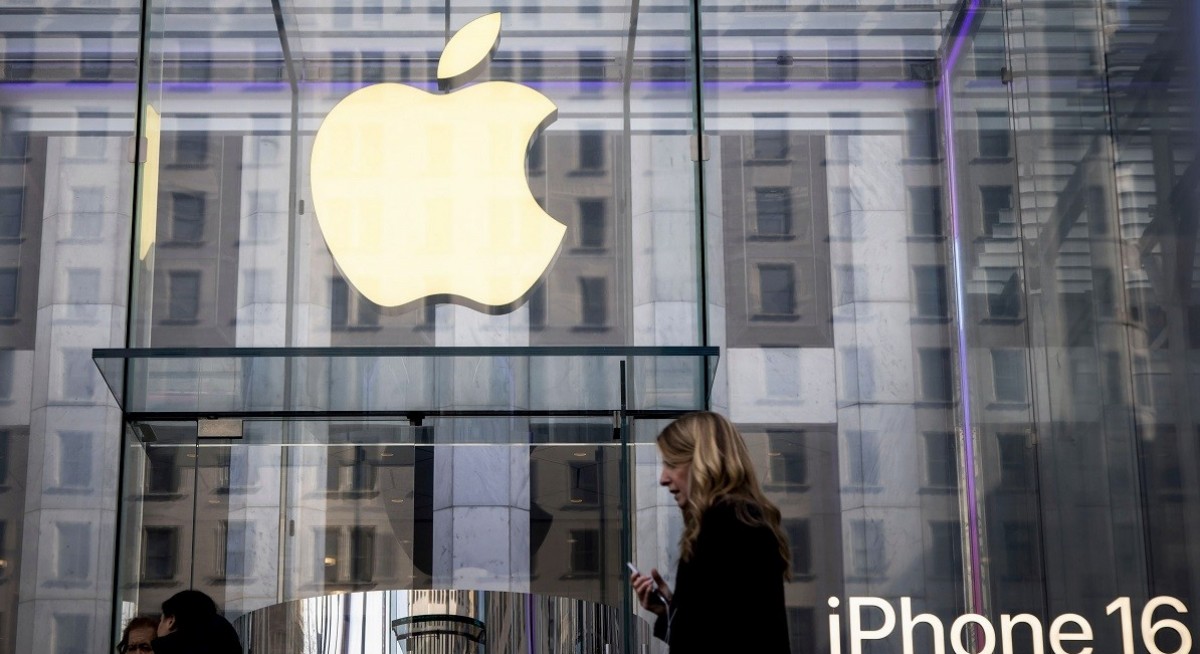“President Trump’s America First economic agenda has secured trillions of dollars in investments that support American jobs and bolster American businesses,” White House spokesperson Taylor Rogers said in a statement. “Today’s announcement with Apple is another win for our manufacturing industry that will simultaneously help reshore the production of critical components to protect America’s economic and national security.”
Apple did not immediately respond to a request for comment.
The company has previously announced it plans to spend US$500 billion in the US over the next four years, which will include work on a new server manufacturing facility in Houston, a supplier academy in Michigan and additional spending with its existing suppliers in the country. Wednesday’s announcement will bring Apple’s cumulative commitment to US$600 billion, the White House said.
Apple shares were up as much as 3.6% on Wednesday, the most in almost three months.
See also: JPMorgan flips forecast, sees Fed cutting rates in December
The latest pledge may “soften the White House’s ire” over Apple’s heavy reliance on India for iPhone assembly, Bloomberg Intelligence analysts Anurag Rana and Andrew Girard said. “We anticipate Apple will focus on higher-end products, artificial intelligence labs and semiconductor engineering in the US, rather than mass-produced lower-end phones and accessories.”
Trump signed an order Wednesday hiking tariffs on goods from India by an additional 25% over its purchases of Russian oil, on top of a 25% country-specific duty set to take effect Thursday.
While Apple’s promised investment is substantial, it stops short of the full shift to US-based production that Trump and top White House officials have envisioned.
See also: Fed’s Williams says he sees room for rate cut in ‘near term’
Earlier this year, the president threatened to hit Apple with a tariff of at least 25% if it didn’t move manufacturing of the iPhone to the US, a day after meeting with Cook at the White House. Trump administration officials have suggested that Apple could assemble its phones and other electronics domestically using robotics.
Apple said last week that it took an US$800 million hit from tariffs in the June quarter — slightly less than previously projected — and expected them to add US$1.1 billion its costs in the September quarter, assuming no policy changes or new duties.
During a call last week with analysts, Cook said “the vast majority” of iPhones sold in the US come from India, while the bulk of other products, such as MacBooks, iPads and Apple Watches, sold in the US are manufactured in Vietnam.
“We obviously try to optimize our supply chain,” Cook said at the time. “And ultimately, we will do more in the United States.”
But onshoring manufacturing, particularly for the iPhone product line, would amount to a massive undertaking for Apple, whose facilities in China and India employ several hundred thousand people and involve heavily customized processes.
Instead, Cook has led a push to win a tariff carve-out for the company’s most important products. Trump is readying plans to unveil levies on all products containing semiconductor chips as soon as next week. Separately, the president’s country-specific tariffs on dozens of trading partners are set to take effect on Thursday.
During Trump’s first term, Apple was able to convince Trump to exempt its products from import taxes. If Cook is able to do so again, it could help the company avoid costs that analysts expected to erode profit margins and increase consumer prices — or even offer a competitive advantage over foreign rivals including Samsung Electronics Co.
To stay ahead of Singapore and the region’s corporate and economic trends, click here for Latest Section
Cook has sought to curry favour with Trump over a series of private meetings and dinners, and was among a small group of tech leaders — including Elon Musk, Alphabet Inc’s Sundar Pichai, Meta Platforms Inc’s Mark Zuckerberg and Amazon.com Inc founder Jeff Bezos — who attended the president’s second inauguration at the US Capitol.
Still, Apple’s initial US$500 billion, 20,000-job pledge, first announced in February, represented just a slight acceleration over its prior investments and previously announced plans, adding US$39 billion in spending and an additional 1,000 jobs annually.
The Apple event is the latest in a flurry of announcements Trump has made alongside corporate leaders who have said they plan to increase their US presence.
Earlier this year, Trump announced a US$100 billion investment in artificial intelligence data centers from Oracle Corp., SoftBank Group Corp. and OpenAI Inc. — with a goal of increasing the total to at least US$500 billion — a bid to boost American innovation in technology and artificial technology. OpenAI and Oracle later announced they will develop 4.5 gigawatts of additional US data-center capacity in an expanded partnership.
The president has also ramped up partnerships with key players in the chip industry, announcing that Nvidia Corp., the dominant player in chips for AI models, plans to produce as much as half a trillion dollars’ worth of AI infrastructure in the US over the next four years through manufacturing partnerships.
Trump has also made securing investments a key part of negotiating with other countries on geopolitical issues, such as trade.
Part of the US’ deal with the European Union included an agreement from the EU to purchase US$750 billion in American energy products and invest US$600 billion in the US, while the president’s deal with Japan includes the creation of a US$550 billion fund to make investments in the US.




